Blue-crowned Lorikeet
Also known as:
Blue-crested Lory, Samoan Lory, Segavao (Samoa), Hengehenga (Tonga)
Also known as:
Blue-crested Lory, Samoan Lory, Segavao (Samoa), Hengehenga (Tonga)
DID YOU KNOW?
These lorikeets usually nest in trees but also will dig burrows in banks, although nesting sites are not confirmed in these.

Vini

australis
Size:
19 cm (7.4 in)
Weight:
47-52 g (1.6-1.8 oz)
Subspecies including nominate:
one
Colour Adult:
Small, mostly green parrot, red on throat and abdomen, blue-streaked feathers on crown, dark orange beak, yellow eye, blue/purple thighs.
Colour Juvenile:
As in adult but with less red on face and throat, little or no abdominal patch, shorter blue streaking on crown, no purple/blue on thighs, eye brown.
Call:
Shrill, high-pitched and creaky, described as a screech or whistle, while feeding or in flight.
More Information:
Content Sources:
CITES
BirdLife International
Cornell Lab of Ornithology/Birds of the World
A Guide to Parrots of the World, Juniper and Parr, 1998
Parrots of the World, Forshaw and Cooper, 1977, 1989. 2010 edition
Parrots of the World, Forshaw, 2006.
Captive Status:
Uncommon
Longevity:
—
Housing:
Enclosure 11′ x 4′ x 7′ (3.3 x 1.2 x 2.1 m) high.
Diet:
Commercial lory nectar, fruit and vegetables.
Enrichment:
Large chunks of fruit, mealworms and romaine lettuce for enrichment.
Nest Box Size:
L-shaped box.
Clutch Size:
1 to 2
Fledging Age:
49-66 days
Hatch Weight:
—
Peak Weight:
—
Weaning Weight:
—
World Population:
Unknown but reported as common, decreasing.
IUCN Red List Status:
Least Concern
CITES Listing:
Appendix II
Threat Summary:
Not globally threatened. A BirdLife “restricted-range” species. Common throughout much of range, including Lau Archipelago, Samoa and Futuna but on Wallis extinct, possibly due to black rats (Rattus rattus). Declining on Tonga, uncommon on Late, extinct on ‘Eua. Abundant on Niuafo’ou and Niuatoputapu. The Jungle Myna (Acridotheres fuscus) has spread throughout the Fijian, Tongan and Samoan archipelagos and is a point of concern due to its aggressiveness with nest cavities.
Range:
Found in Samoa and Tonga, including islands in Polynesia and in the southern Lau Archipelago, Fiji and Niue.
Habitat:
Found in woodland, coconut palms, areas with flowering trees from coastal habitats to mountains, gardens and cultivated areas.
Wild Diet:
Feeds on nectar, pollen and soft fruit, most notably coconut, mango, Erythrina, Elaeocarpus angustifolius and Calophyllum inophyllum. On Niuafo’ou, flowering Casuarina is important, along with Sterculia fanaiho, Kleinhovia hospita, Musa paradisiaca, Alphitonia ziziphoides, Pueraria lobata, Barringtonia asiatica, Hibiscus tiliaceus and Pometia pinnata. In other areas, flowers of thatching palm Metroxylon are used. Unripe mangoes and flowers of woody Stachyrtarpheta urticifolia were likely taken as a result of food shortages following a hurricane.
Ecology and Behaviour:
Nomadic, sometimes travelling between islands; aggressive but gregarious, found in flocks up to a dozen birds outside of the breeding season.
Clutch and Egg Size:
1 to 2 eggs, 27 x 24 mm (1.1 x 0.9 in)
Breeding Season:
Possibly year-round as March, June, August and December have been recorded. Nest is cavity in tree.
Related Links:
—
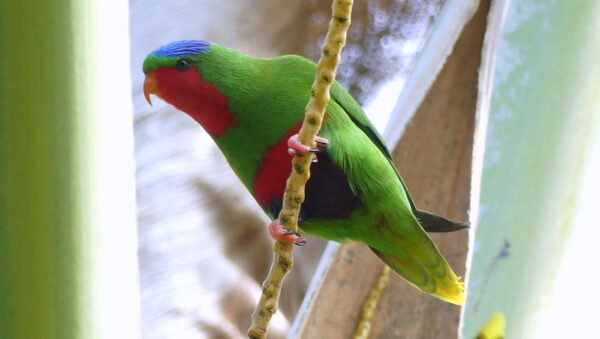
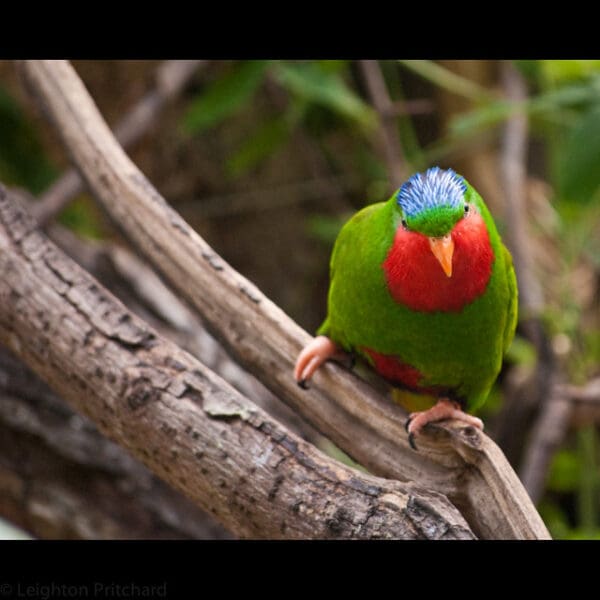
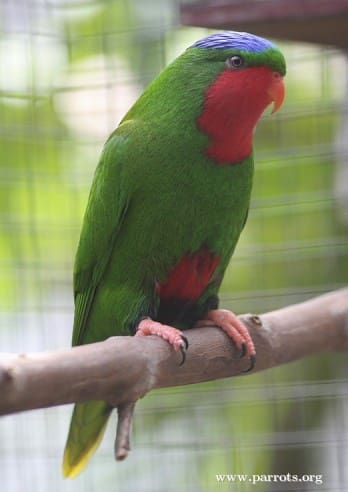
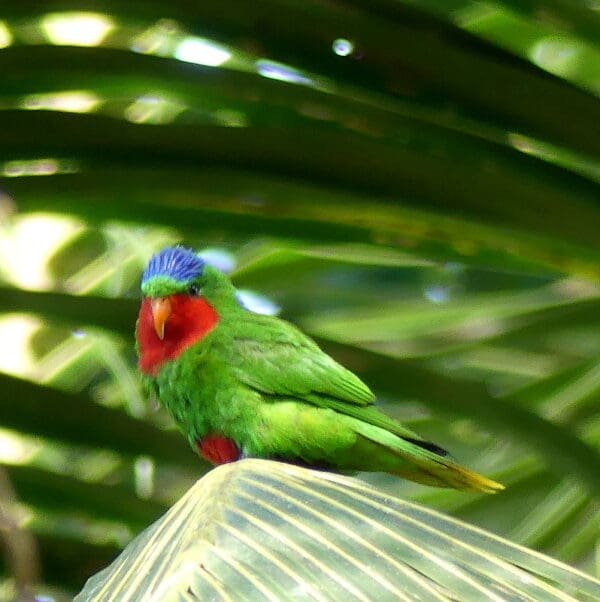
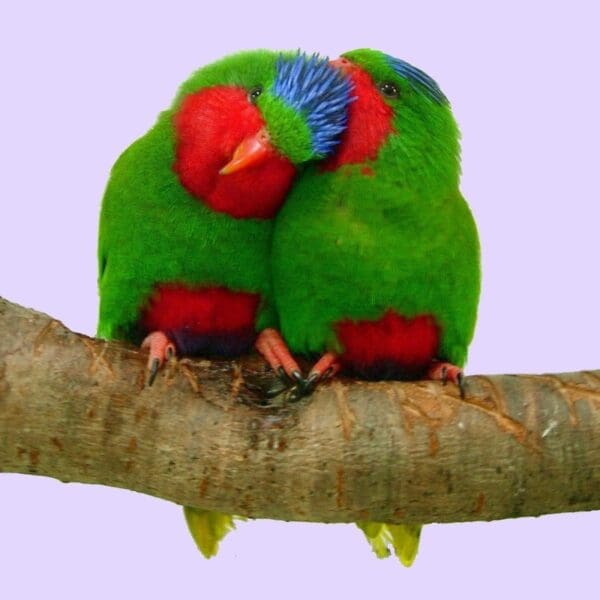
![© Diana Padrón [CC BY-NC 2.0] via Flickr A wild Blue-crowned Lorikeet perches in a tree](https://parrots.org/wp-content/uploads/1990/02/Blue-crowned-Lorikeet-Diana-Padron-100x100.jpg)
![© widdowquinn [CC BY-NC-SA 2.0] via Flickr A Blue-crowned Lorikeet at London Zoo perches on a branch](https://parrots.org/wp-content/uploads/2023/01/wpt_Blue-crowned-Lorikeet_1135-6-100x100.jpg)
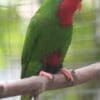
![© Diana Padrón [CC BY-NC 2.0] via Flickr A wild Blue-crowned Lorikeet perches on a palm frond](https://parrots.org/wp-content/uploads/1990/02/Blue-crowned-Lorikeet-100x100.jpg)
![© TJ Lin [CC BY-SA 2.0] via Wikimedia Commons Blue-crowned Lorikeets allopreen](https://parrots.org/wp-content/uploads/1990/02/Blue-crowned-Lorikeet-TJ-Lin-100x100.jpg)